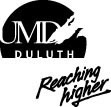

Microbiologically Influenced Corrosion
Steel sheet pilings used for docks, bridges and bulkheads in the Duluth-Superior Harbor (DSH) have been reported to be corroding at an accelerated rate not observed at other ports and harbors in the Great Lakes. The increased rate of corrosion appears to have begun in the late 1970’s. About 20 kilometers of steel sheet piling appears to be affected in the DSH, which may cost more than $100 million to replace if the cause and possible remedies cannot be identified. The corroded steel sheet pilings have an orange rusty appearance characterized by blister-like, raised tubercles on the surface. This pattern of corrosion is consistent with the appearance of corrosion caused by iron-oxidizing bacteria. We are examining the diversity of microbial communities attached to these pilings by cloning bacterial members of these communities and sequencing their DNA, using community DNA fingerprinting (T-RFLP), and isolating bacterial members of the biofilm communities whose activities may contribute to this corrosion. We will determine if differences in microbial communities at corroded and less affected sites indicate the participation of specific bacteria in this corrosion process. We are collaborating with the Duluth Seaway Port Authority, AMI Consulting Engineers, and the U.S. Army Corps of Engineers on this project.
Research grants from the Duluth Seaway Port Authority, the UM Center for Urban and Regional Affairs, the Great Lakes Maritime Research Institute, the Minnesota Sea Grant Program, and the US Army Corps of Engineers are supporting this research.

For Prospective:


